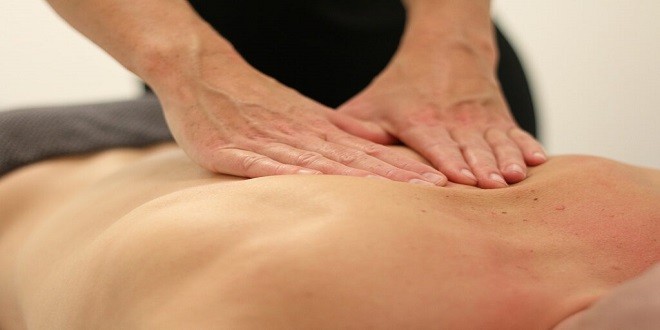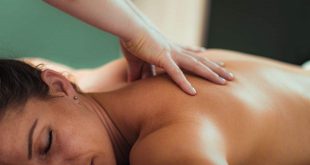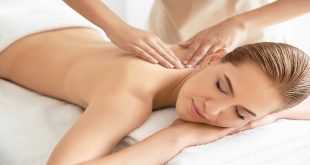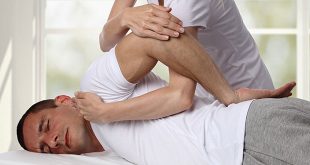There is always a need for relaxation and stress alleviation in our fast-paced lives. Giving seated people a back massage 부산출장마사지 can be a considerate and practical method to ease their discomfort and reduce stress. Whether you’re assisting a friend, relative, or romantic partner, becoming proficient in seated back massage can significantly improve their quality of life. We’ll review the guidelines and methods in this tutorial to ensure you get a comfortable and delightful sitting-back massage.
Establish the Scene:
Start by setting up a peaceful atmosphere. Pick a calm place with soft furnishings, low lighting, and calming background music. Ensure the chair is supportive and stable so the individual getting the massage may unwind completely.
Speak and Make Sure You’re Comfortable:
Speak with the person seated before starting the massage. Inquire about any pressure points that are tense, uncomfortable, or preferred. To get the most out of the massage, ensure they are comfortable with the chair and its arrangement.
Get Your Hands Ready:
Warm up your hands before reducing friction and creating a smooth massage. To begin the massage, quickly rub your palms together to create heat. Then, use this warmth to place your hands on the recipient’s shoulders gently.
Begin with strokes of éffleurage:
Effleurage strokes are lengthy, sweeping strokes that assist in relaxing the muscles and establishing a rapport between the massage therapist and the person getting massaged. Start the massage with these techniques.
a. Effleurage on the Shoulders:
Clasp their shoulders with your hands.
Go from the base of the neck to the outer shoulders with a soft, gliding motion.
Repeat multiple times, increasing the pressure progressively as the muscles loosen up.
b. Effleurage (upper back):
Move from the shoulders down to the lower back, extending your strokes to reach the upper back.
Continue moving rhythmically while making sure your hands are touching their skin.
Proceed to Kneading Methods:
By raising and compressing the muscles, kneading encourages more profound relaxation and the release of tension.
a. Kneading the shoulders:
Work out the kinks in the shoulder muscles using your fingers and thumbs.
Use circular motions and progressively increase pressure according to how comfortable it is for them.
Pay attention to any tense areas or knots.
b. Kneading the upper back:
Proceed to knead the upper back using circular motions with your hands.
Focus on the muscles that go along the shoulder blades and the sides of the spine.
Deal with the points of tension:
Determine the back’s knots or spots of stress, then apply focused pressure on these areas.
a. The Thumb Pressure Method
Firm pressure can be applied to particular tension sites using your thumbs.
Encourage the muscles to release by holding the pressure for a short while.
As necessary, repeat.
b. Friction in a Circle:
To relieve localized tension, use your fingertips to create circular friction.
Make tiny circles that progressively widen to encompass the afflicted region.
Adapt the pressure in response to their input.
Include Stretching Exercises:
Mild stretching exercises improve flexibility and help relieve further back tension.
a. Extend your arms:
Request that the individual reunite their hands in front of you.
Extend their arms gently to extend their shoulders and upper back.
Release after 10 to 15 seconds of holding.
b. Side Extend:
Have them extend an arm above their head.
Stretch the Side of the body by gently leaning them to the other Side.
After 10 to 15 seconds of holding, switch sides.
Pay Attention to the Neck:
Given that the neck is prone to tension and stress pay attention to it.
a. Neck effleurage:
Apply light effleurage pressure to the nape and sides of the neck.
In order to encourage relaxation in this delicate area, keep your touch light.
b. Turning the neck:
Ask them to look sideways with their head.
Stretch the muscles in their neck by gently rotating their head.
Repeat on the opposite Side after holding for a short while.
Conclude with Effleurage Strokes:
Effleurage strokes are the last technique used to conclude a sitting back massage.
Complete Reverse Effleurage:
Apply lengthy, sweeping strokes across the whole back.
As the massage comes to a close, gradually release the pressure.
b. Effleurage from Neck to Shoulders:
Use light effleurage movements to return to the shoulders and neck.
Make the transition seamless to finish the massage session.
Promote Rest and Hydration:
After the massage, advise the person to drink 광안리출장마사지 water to flush out toxins generated during the massage. Give them time to relax and reap the benefits of the massage, enhancing their general health.
In summary:
Learning how to provide a back massage while seated can be a fulfilling experience that encourages relaxation and improves the well-being of people around you. You may give the individual in the chair a memorable and revitalizing experience by setting the proper mood, applying efficient massage techniques, and emphasizing communication. Remember that every person has different tastes, so pay attention to what they say and modify your methods accordingly. With this do-it-yourself massage guide, you may give your friends, family, or loved ones the gift of relaxation and stress relief whenever they need it most.
 Naa Songs
Naa Songs




